My wife and I have developed a mid-scale grain garden and have shared much of the crop operations earlier in this article series. We are in the middle of disclosing modifications to the Rodale Thresher as part of our Threshing and Winnowing operation. Let’s continue.
Threshing and Winnowing (continued)
Exit Modifications To Avoid Lost Grain
I used ½” galvanized hardware cloth for the exit screen as shown in Figure 10. Most of the grain lost from the thresher is via sweeping out seed along with threshing debris. Counter this by installing finished 1” X 1” boards across the screen to provide stops, and also by sweeping the coarse debris side-to-side before sweeping it out.
The original thresher design dropped the grain through the screen onto the floor. I installed a drawer under the screen as shown in Figure 10. A 5-gallon bucket full of reaped grain results in a drawer ⅔ full of threshed debris. The drawer is then emptied into a 5-gallon bucket (Figure 11), and my wife winnows this (Figure 12) while I thresh another bucket load of seed heads.
Wheels To Move the Thresher
Because I needed to be able to move the thresher from where the thresher was stored to the location where it was to be used, I installed wheels (Figures 9 and 15). The plywood between the wheels is separated by 1” pipe, and a 3/4” fender washer separates the pipe from the plywood walls. A ¾” shaft runs through the wheels, the plywood walls, and the pipe and washers inside. The purpose of the pipe is to unify the supporting plywood, to better resist side pressures when making turns. The shaft was hardened steel, and I was not able to either thread the ends nor bore a hole for a cotter pin in the ends. Therefore, I tack-welded a washer to the ends of the shaft outside the wheels. It will be easy to burn off in case I ever need to replace a wheel, which isn’t likely.
For a towing tongue, I bolted on 2” X 4” boards that extended forward, as shown in Figure 9. A threaded rod was inserted through the boards and then through a pipe with washers as with the wheels. A one-foot loop of rope tied by fisherman knots, looped over a ball hitch, wrapped twice around the pipe handle, then looped again over the ball hitch provides a secure attachment to the tractor for moving the thresher. The thresher is heavy and not really portable very far by a man.
Figure 10: A drawer with threshed oats from the 5 gallon bucket of oat heads and stalks. Use of the plastic-bristled broom, shown off to one side is a necessity. The bristles were originally about 6 inches long, and I cut them down to about 4 inches long for less flexibility. I use the broom to push grain heads for threshing down into the beaters, and I also use it for brushing coarse threshing debris out of the end of the thresher. Never push stalks into the beater bars or pull exiting debris away from the beater bars by hand, unless your hands are expendable. Use the broom.
Figure 11: Dumping the threshed oats into a bucket in preparation for winnowing.
Figure 12: Winnowing oats. Note that Peri is raking out threshed oats in the top left corner of the blower. The clockwise air swirl from the fan carries oats to the center. A more professional-looking design would add eye appeal, but this works. Some oats near the wood block and under the screen will be re-winnowed. Heavier barley seeds do not have any retained sheaths, and they drop like little stones right in front of the blower. Some oat seeds retain their hulls and oats vary more in size; winnowing results in a continuum of large seeds grading into smaller seeds and seeds with sheaths and grading into non-seed debris, with increasing distance from the fan. You must make a judgment about where, in this continuum, to draw the line for “keepers”.
Cleaning Grain After Winnowing
After winnowing, the grain is screened through a ¼” galvanized hardware screen (Figure 13), and then is cleaned by pouring seed down a column of uprising air, see Figure 14. The initial version of this cleaner used a 3-inch squirrel cage blower, which didn’t produce enough air flow. I mounted another blower to compress air before it entered the 3-inch blower (Figure 15), effectively converting it into a 2-stage blower. Thinking this might be too strong and blow seed out, I put a variable speed switch on the added blower; however, in practice, at full strength, the rising air column from the 2-stage blowers has just about the right speed. You can pour a steady stream of seed down the blower pipe; it’s fast. We pour the seed through twice; the second cleaning is marginally necessary.
The Grain Cleaner
Thirteen to fourteen years is a long time, on the Internet. The cleaner (my term) that is shown mounted on the back of the thresher in Figure 14 is an exact copy of a design described by a student of some Californian University – I think – who called it a winnower. I tried to find the source of this design, to give credit, and I failed. But there are a lot of newer designs, and I see retail sites for purchasing imported winnowers and threshers. Again, the 13 to 14 years since I searched the Internet for winnowers was a long time ago.
Figure 13: Screening the winnowed oats. Pour about a cup full of oats on the screen, tap the screen several times, and most of the oats fall through, leaving larger debris.
Figure 14: Cleaning the winnowed and screened oats. Winnowed and screened oats or barley are poured into the funnel at the top. Air is blown in from the 45 degree angled pipe at the bottom, resulting in a rising column of air that carries light debris straight out the top. Cereal grains fall to the bottom, into a pail placed below the straight black pipe, the pail covered to keep out falling chaff. Don’t cement the connections; some seeds bounce into the pipe from the blower, and the apparatus must be partially disassembled periodically to clear the blower pipe. Note the idler wheel installed to keep the V-belt that connects the two beater bars tight. Without this idler wheel, it seems impossible to prevent the belt from slipping.
Figure 15: The 2-stage blower motors to increase the air flow velocity.
Figure 16: Drying barley (foreground) and oats (background) before storage. The threshed, winnowed, screened, and air-cleaned barley and oats are spread out on plastic tarps (if the day is sunny) to dry as much as possible before being stored in 32 gallon containers (new plastic garbage containers to the right). Grain moisture meters can be purchased to ascertain that grain to be stored is down to the desired 12% (as I recall) moisture content.
Final Cleaning
A final cleaning measure is that we pour grain, a cupful at a time, on the kitchen table, fingering out any grains still retaining hulls along with any remaining debris before the grain is rolled, ground into flour, or just used whole. Mostly, by this time the grain is fairly clean, and this operation can be fast.
Scaling Up the Harvesting Operations
I can operate the thresher about as fast as my wife can winnow the threshed debris. The threshing volume could be doubled if one person loaded the thresher while another swept out the debris. Meanwhile, two people would be necessary to operate two winnowers. Another person could be screening and cleaning the grain. When allowed by dry fall weather, if two more people with another trailer could reap concurrent with the threshing operation, production volume could double again. This equipment, scaled up to provide maximum operation of the thresher, could normally provide grain annually for a small neighborhood.
A variant of the “tragedy of the commons” remains, however. While many may benefit from scaled up operations, one person will wind up responsible for the crop production and distribution operations as well as the construction, repair, and maintenance of all the equipment; or the total operation will fall apart. One visual signal of impending disintegration of a joint enterprise is a few doing most of the work while most of the others have something else to do, or have already left the joint enterprise. I’ve seen it happen in two communes with each united by a common religion and supposedly common purpose. Multi-family owned machinery (the commons) plus multi-family volunteer labor plus multifamily division of the product has multi-family problems. Therefore, I believe that some form of free market operation will be more sustainable than a socialized solution.
So, What To Do With All This Grain?
Since our grain supply for family use is practically unlimited and largely pre-paid with our prior purchase and construction of needed equipment, use of home-grown grain for food is without economic limit.
Our Bread
For bread, we grind our own barley flour and wheat flour and dilute the wheat with barley and rolled oats in varying proportions, along with other ingredients, depending on my wife’s current recipe. Neither barley nor oats have much or any gluten and therefore will not make bread when used alone. This combination of wheat and barley flour makes excellent bread. We’ve made barley-only bread with baking powder, and it has the texture of corn bread along with what my wife says is a bland flavor. It’s okay with me, but it won’t make sandwiches.
My wife has recently begun to experiment with a barley tortilla composed of barley flour (no wheat flour), sesame seeds, salt, water, and that’s all. Formed on a tortilla press and cooked on a griddle, it remains flexible and tough enough to serve as a sandwich wrapper; and we like it. I think that our barley consumption will climb, because our noon meals are based on a sandwich with side dishes.
Other Users
We also use the barley grain to supplement store-bought rice. It is especially good cooked with brown rice in a 50% brown rice and 50% barley ratio. It is actually quite good by itself with butter and salt and pepper. And, of course, it’s great in stews and soups. All of this comes from my wife.
Rolling Our Oat Grains
We almost exclusively roll our oat grains. Our breakfasts six days per week are either cooked rolled oats or granola made with our rolled oats. Additionally we use the rolled oats in cookies, rolls, filler for meatloaf, et cetera. The uses approach limitless, my wife says. We used to hand roll our oats, but our addition of a roller attachment for our Kitchen Aid mixer has made life much easier.
Amount We Use
Trying to use as much of our own grain as possible in our diets, the quantity is really not much. My wife estimate is 15, maybe 17, gallons of oats per year. We use much less barley, which she estimates at maybe between six and eight gallons per year.
So, that’s what we do with all this grain. In addition to consumption, since it stores well, we only need to produce a grain garden once every several years. The freed up time is play time, or whatever.
Sale of Grain
Sale of grain, even if profitable in “good times”, has a potential problem of the grower becoming known as a source of food to those who prefer to take rather than produce during “bad times”. Sharing consumption with neighbors is possible, but be wary of developing a dependency that the recipient can’t, or won’t, repay in some way. The arrangement should be barter.
Combining a grain garden with a vegetable garden and wild game and fish, we’ve attained a high level of food self-sufficiency. Now in “good times”, our food costs are somewhat above minimum in order to maximize taste and variety, because we can afford it. In “bad times”, our fall back position is still comfortable. I hope that this information will enable others to become more food self-sufficient as well.
Disclaimer
I’ve expressed many opinions here, mainly in the preamble, and they are all mine and not the editors of this publication.
See Also:
- 1 – Mid-Scale Grain Gardening in Alaska- Part 1, By Alaskan Gardeners
- 2 – Mid-Scale Grain Gardening in Alaska- Part 2, By Alaskan Gardeners
- 3 – Mid-Scale Grain Gardening in Alaska- Part 3, By Alaskan Gardeners
SurvivalBlog Writing Contest
This has been part three of a four part entry for Round 74 of the SurvivalBlog non-fiction writing contest. The nearly $11,000 worth of prizes for this round include:
First Prize:
- A $3000 gift certificate towards a Sol-Ark Solar Generator from Veteran owned Portable Solar LLC. The only EMP Hardened Solar Generator System available to the public.
- A Gunsite Academy Three Day Course Certificate. This can be used for any one, two, or three day course (a $1,095 value),
- A course certificate from onPoint Tactical for the prize winner’s choice of three-day civilian courses, excluding those restricted for military or government teams. Three day onPoint courses normally cost $795,
- DRD Tactical is providing a 5.56 NATO QD Billet upper. These have hammer forged, chrome-lined barrels and a hard case, to go with your own AR lower. It will allow any standard AR-type rifle to have a quick change barrel. This can be assembled in less than one minute without the use of any tools. It also provides a compact carry capability in a hard case or in 3-day pack (an $1,100 value),
- Two cases of Mountain House freeze-dried assorted entrees in #10 cans, courtesy of Ready Made Resources (a $350 value),
- A $250 gift certificate good for any product from Sunflower Ammo,
- Two cases of Meals, Ready to Eat (MREs), courtesy of CampingSurvival.com (a $180 value), and
- American Gunsmithing Institute (AGI) is providing a $300 certificate good towards any of their DVD training courses.
Second Prize:
- A Model 175 Series Solar Generator provided by Quantum Harvest LLC (a $439 value),
- A Glock form factor SIRT laser training pistol and a SIRT AR-15/M4 Laser Training Bolt, courtesy of Next Level Training, which have a combined retail value of $589,
- A gift certificate for any two or three-day class from Max Velocity Tactical (a $600 value),
- A transferable certificate for a two-day Ultimate Bug Out Course from Florida Firearms Training (a $400 value),
- A Trekker IV™ Four-Person Emergency Kit from Emergency Essentials (a $250 value),
- A $200 gift certificate good towards any books published by PrepperPress.com,
- RepackBox is providing a $300 gift certificate to their site.
Third Prize:
- A Royal Berkey water filter, courtesy of Directive 21 (a $275 value),
- A large handmade clothes drying rack, a washboard, and a Homesteading for Beginners DVD, all courtesy of The Homestead Store, with a combined value of $206,
- Expanded sets of both washable feminine pads and liners, donated by Naturally Cozy (a $185 retail value),
- Two Super Survival Pack seed collections, a $150 value, courtesy of Seed for Security, LLC,
- Mayflower Trading is donating a $200 gift certificate for homesteading appliances, and
- Two 1,000-foot spools of full mil-spec U.S.-made 750 paracord (in-stock colors only) from www.TOUGHGRID.com (a $240 value).
Round 74 ends on January 31st, so get busy writing and e-mail us your entry. Remember that there is a 1,500-word minimum, and that articles on practical “how to” skills for survival have an advantage in the judging.











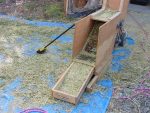
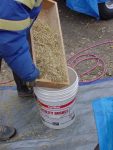
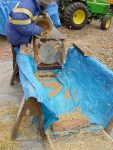
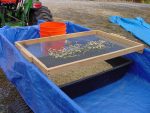
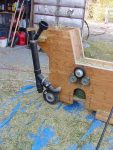

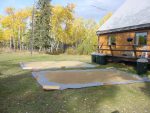
As a child in Minnesota I lived on a farm and in the early 1940’s I remember binders cutting grain, shocking the grain, groups of 25 or so farmers using a massive fixed threshing machine going from one farm to the next and hauling the bundles of grain from the fields to the machine and pitching them into the machine, a complex interaction of ownership of resources and cooperation between the farmers. The grain was placed in massive bins and most was fed to the animals on the farm. Then the use of combine came into our area and 5 years later, by about 1950, there were no more threshing machines in our area and each farmer either worked alone or hired it done, and then often sold the grain rather then using it on the farm, and the interrelationship between the farmers disappeared. Grain harvesting interactions that helped define our community and went back generations collapsed in 5 years or so. It was indeed part of the collapse of the commons and the use of shared resources that transformed, and in the end, destroyed the culture of the small independent farmer in our area. In most of the USA, no fuel, no massive machinery, no concentration of ownership, no massive single crop production, no food. As this article points out, even under the best of conditions, ie, you don’t die if you make a mistake and have the resources, to get the seed, prepare the soil, seeding, weeding, harvesting, storage, milling, and cooking, it takes several years to develop the infrastructure and to get it all sorted out. The transformation from stored food to self reliance would be very difficult and I am afraid for most of us as preppers, it will be the step that will lead to failure.
Thanks for the historical information and your perspective. Everything that you said and surmised rings of truth to me. Additionally, for some of us seniors, there is no younger generation interested in or available to carry on the techniques that SurvivalBlog members have recaptured to maintain a more independent lifestyle — for the US as a whole, there is no “going back”. Today’s food production and distribution system is complex, globally inter-connected, “just-in-time” availability, and highly vulnerable to breakdown. As others have pointed out, a lack of diversification means a lack of adaptability which can mean death to organisms or complex systems. I hope some of the younger preppers with families can instill and teach self-sufficiency to their children.
One of the best articles I have ever read on this website! Great job!
I will be using some of your techniques and ideas!